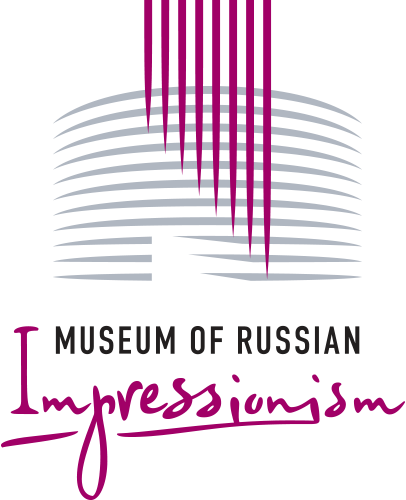Museums Under Quarantine. From Moscow to Kyoto
15 May 2020
The world is changing drastically before our eyes. This affects our museums, exhibitions, our visitors and us personally. Museum employees are people who are in love with what they do. They go to the “temples of culture” in order to worship art, people, sensibility, kindness and everlasting virtues, and not simply to earn money. Museum people even share the same language, it is a universal language of art, images and stories. With this project, we want to reflect on how the area will evolve, how we shall build our work, how we can help our visitors and how not to lose our connection with them at this challenging time.
The Museum of Russian Impressionism has interviewed people from different museums across the world and learned how their life is organized now.
Interview of Conversation between the chief curator, Natalia Sviridova, with the head curator at the National Museum of Modern Art, Kyoto, Yuko Ikeda.
Natalia: My name is Natalia Sviridova and I am a Head curator at the Museum of Russian Impressionism since 2016. Now I am working on organizing the exhibition of Japanese Yōga paintings of Meiji era and some artworks of Taisho era. Yōga is the name of the western style of painting in Japanese art when artists of the 19th and 20th centuries began to use painting and drawing techniques of the European part of the world. One of my colleagues who helped me choose some artworks for this project is Yuko Ikeda. He is a Head curator at the National Museum of Modern Art in Kyoto. This museum was founded in 1963, and its collection now includes more than 11000 works. It is one of the largest museums in Japan.
In addition to the permanent exhibition, the Museum organizes an average of five large temporary exhibitions a year, including themed mini-exhibitions, or displays the results of scientific research made by the museum staff. Along with the exhibitions, the museum also organizes seminars and training programs, and its employees participate in international and Japanese scientific conferences.
Due to the СOVID-19 crisis, the plans of all museums in the world have changed dramatically. Exhibition life has stopped. We’d been planning to welcome Japanese colleagues at the Museum of Russian Impressionism in Moscow, but our plans were canceled – at first because of recorded cases of COVID-19 in Japan, and then in Russia.
And although my working day is very different now, none of my duties have been withdrawn. I start my work at 9-10 in the morning and finish at 18-19 in the evening. I am still working on the preparation of a future exhibition and even the excursion work has not stopped - I take part in online live streams about our current projects and works from the museum’s collection. Modern technologies allow me to keep track of temperature and humidity levels 24/7 without even leaving my flat. However, I cannot inspect the condition of all artworks every day, so once a week I travel to the museum bearing a special pass. This is not so dramatic as the exposition is closed, there are no visitors in the halls, the lights are off and the works are not under stress - they are resting.
Natalia: Dear Mr Ikeda, how was your working day organized earlier? And how is it organized now?
Yuko: My working hours were more flexible than those of other curatorial staff, because I take responsibility as a Head curator 24 hours 7 days a week. I also had many domestic trips, especially to Tokyo, and international ones for the meetings. I continue going to the office, though it takes me less time now, I have to supervise the correspondence with other institutions and staff. Though instead of trips, we organize many online meetings now.
Natalia: The work of the Museum of Russian Impressionism does not stop, on the contrary – we are preparing several future exhibitions, searching for artworks, identifying them, collecting historical information, etc. I know that your team hasn’t stopped working either. How does the National Museum of Modern Art, Kyoto work now? Do you work online more or prepare new offline projects?
Yuko: The curatorial staff is working from home during the state of emergency due to COVID-19, and communicate via e-mails or video calls. After the state of emergency is canceled, we will gradually come back to the office to proceed with the planned projects.
Natalia: Now the movement across Moscow is limited and most of museum staff work from home. I can even hear birds in the morning since there are so few cars in the streets. How does your city live now? Can you move freely?
Yuko: We are living now under a state of emergency and required to stay at home. But there are no legal punishments in Kyoto. As for me, I lost the chance to meet my parents who live in a different city.
Natalia: Many specialists predict that this pandemic will change the world, and that it is necessary to come up with new insights about the place of museums for the near future. In your opinion, what will the National Museum of Modern Art, Kyoto, be like in the future, and will its history change with COVID-19? What’s your dream about the future of the museum?
Yuko: We are reaffirming that the collection is the core of the museum. For us, it is the chance to revise the strategy of the collection and the organization of the exhibition format. We have to work more comprehensively to make our collection a platform for rethinking the principles of society and culture.
Natalia: Will your museum’s audience change after the pandemic, or will it remain the same?
Yuko: I hope that after the pandemic people will find museums, or arts in general, more important in order to survive any life complications.
Please take care of yourself, your family and your museum.



